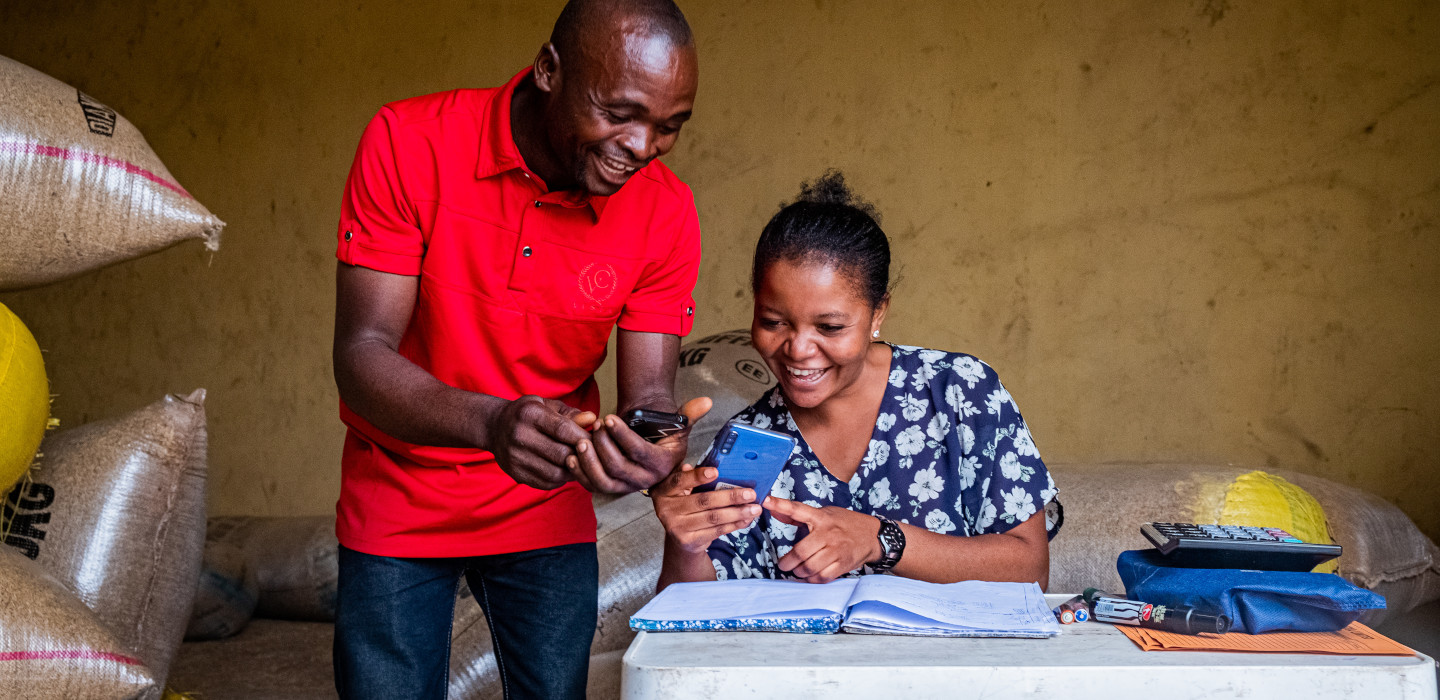A look at the digital technologies transforming agriculture
IFAD Asset Request Portlet
Asset Publisher
A look at the digital technologies transforming agriculture
Estimated reading time: 4 minutes
Throughout its very long history, agriculture has periodically been shaken up by various technological revolutions – among them, the introduction of plant hybridization, genetic engineering, mechanization and the use of agro-chemicals. The latest revolution, the advent of digital technologies, is no different.
Although it may not be obvious at first glance, agriculture is knowledge-intensive: it stands upon vast amounts of data that must be collected, information that must be processed, and knowledge that should be shared. Digital technologies have dramatically accelerated and expanded these processes in recent times. Here are some of the most influential.
Mobile phones top the list of digital technologies transforming agriculture. They boast the fastest adoption rates ever seen among technologies invented within the last century. As of 2019, around 5.2 billion people – two thirds of the world’s population – were current active users of mobile phones. Access to the Internet via mobile networks is also on the rise, with 49 per cent of the world’s population having ever used Internet services on a mobile device. Only 9 per cent of all people worldwide live outside a mobile network’s coverage area.
Mobile phones have transformed the lives of many rural people, including small-scale farmers, by becoming the gateway to the information and services they need. Even mobile phones without access to the Internet can enable farmers to access solutions, such as advisory services that offer tips on increasing productivity, keeping livestock healthy, and up-to-date weather information. These typically take the form of text-based services built around SMS or USSD messages and voice-based services such as Interactive Voice Systems. Through smartphones, farmers can access an even greater range of high-tech solutions via mobile applications – sometimes even at no cost – that can, as just one example, help diagnose ailing crops and suggest treatments for many types of pests, diseases and nutrient deficiencies.
Financial technologies, often referred to as FinTech, have opened up new ways for rural people to access financial services. Mobile money, one of the best-known FinTech services, is among the fastest-growing innovations on the planet. Having gotten its start with the M-Pesa initiative in sub-Saharan Africa, this service now has nearly 146 million active users throughout the region and accounts for a full 10 per cent of the region’s GDP flows. FinTech is not limited to just mobile money, of course. It encompasses a wide variety of applications that connect small-scale farmers with the financial services they need – such as access to credit, savings, insurance products, and other value-added services that can, for example, provide timely updates on market prices or connect producers and consumers. IFAD has developed a toolkit to share lessons learned in this area, focusing on the strengths and limitations of these different services.
Sensors, meanwhile, enable the collection of data related to key variables across agricultural cycles, which is essential for improved decision-making. Sensors can be installed in the field or operated remotely.
Those installed in the field are typically used for monitoring parameters linked to agricultural production, such as weather, as a means to boost productivity, control pests, or optimize efficiency and minimize waste. They have also been used to monitor livestock and aquaculture. Sensors are also important at the processing stage, where they can help add value to products. Each of these is an example of the Internet of Things, the name for the recent proliferation of everyday objects that have the ability to gather, send and receive data. When it comes to the Internet of Things, agriculture has long been at the forefront of innovation – far more than other sectors.
Remote sensors, on the other hand, are typically found on satellites or aerial vehicles such as drones, which form part of the bigger family of geospatial technologies. They enable observation and spatial analysis on a scale that can improve the agricultural productivity and livelihoods of small-scale farmers, support afforestation and reforestation efforts, expand environmental monitoring, manage financial risks, strengthen farmers’ resilience to vulnerabilities, rehabilitate landscapes, develop territorial plans – and much more.
Geospatial technologies can also improve the targeting, monitoring and assessment of programme outputs and outcomes. IFAD has been very active in this area, particularly through an ad hoc technical network that has contributed to mainstreaming the use of geospatial technologies across initiatives in over 70 countries. Geospatial data are used to support IFAD operations throughout the entire project cycle.
In the years to come, digital technologies will become fundamental to making agricultural and food systems more sustainable and inclusive – and therefore to transforming societies. For this reason, in 2019 IFAD conducted an in-depth stocktake of the use of digital technologies across its portfolio, mapping out the lessons learned and the needs that remained. This work led to the development of a 10-year Information and Communications Technologies for Development (ICT4D) strategy that is expected to help IFAD expand upon and enhance its development impact by leveraging digital technologies.
This strategy will require us to draw upon a broad range of innovations and digital technologies to succeed. The services and applications described above are just a small sample of the range of possibilities available to us – and to the small-scale farmers we partner with.
Publication date: 02 November 2020
